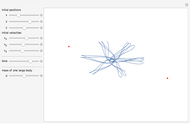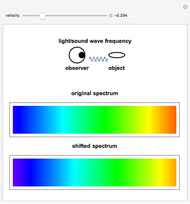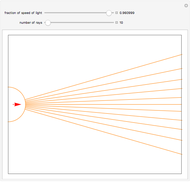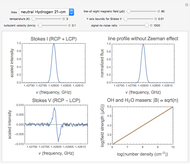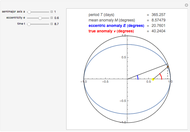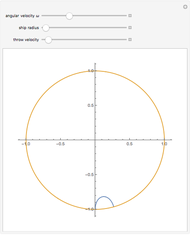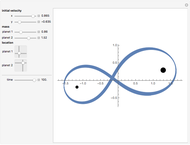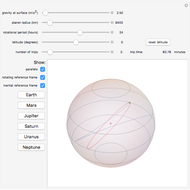Planetary Tunnels with Coriolis Effect

Requires a Wolfram Notebook System
Interact on desktop, mobile and cloud with the free Wolfram Player or other Wolfram Language products.
If you were to dig a tunnel into a planet, what shape would the tunnel have to be so that when you drop an object into it, the object's fall is unobstructed? The object will not necessarily fall in a straight line because of Coriolis forces. This Demonstration shows the path needed for the tunnel under various planetary conditions, including planet radius, surface gravity, rotational period, and initial starting latitude.
Contributed by: Ariel Krasik-Geiger and Ramona Barber (May 2012)
Open content licensed under CC BY-NC-SA
Snapshots
Details
The following equation gives the general form for the relative motion of a particle between an inertial reference frame and a rotating one:
 .
.
Here  is the acceleration of the particle with respect to the inertial frame,
is the acceleration of the particle with respect to the inertial frame,  is the acceleration of the rotating frame's origin with respect to the inertial frame,
is the acceleration of the rotating frame's origin with respect to the inertial frame,  is the angular velocity of the rotating frame about its origin, and
is the angular velocity of the rotating frame about its origin, and  is the position vector of the particle in the rotating frame.
is the position vector of the particle in the rotating frame.
Using Gauss's law applied to gravity, it can be shown that  for
for  , where
, where  is the gravitational acceleration at the surface of the planet and
is the gravitational acceleration at the surface of the planet and  is the radius of the planet. In detail,
is the radius of the planet. In detail,  , where
, where  , the effective attractive mass of the planet inside a sphere of radius
, the effective attractive mass of the planet inside a sphere of radius  (
( ). Also, note that
). Also, note that  . Given that position is a function of time,
. Given that position is a function of time,  is zero, and
is zero, and  is constant, the appropriate substitutions can be made into the above equation to give
is constant, the appropriate substitutions can be made into the above equation to give
 .
.
Solving this differential equation for  gives the path for the falling object with respect to the rotating reference frame of the planet.
gives the path for the falling object with respect to the rotating reference frame of the planet.
Permanent Citation






